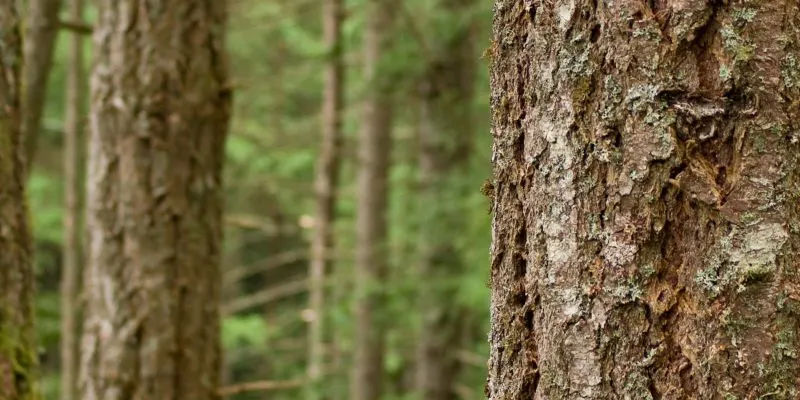Yes, Douglas Fir can rot if not properly maintained. Its susceptibility to moisture makes it vulnerable to decay.
Douglas Fir is a popular choice for construction and woodworking due to its strength and beauty. This softwood species thrives in various climates, making it a common selection for outdoor projects. Despite its durability, Douglas Fir can rot when exposed to excessive moisture or poor maintenance.
Understanding its properties and care requirements is essential for extending its lifespan. Homeowners and builders often prefer this wood for its attractive grain and resistance to warping. By implementing proper treatment and sealing techniques, you can effectively prevent rot and ensure your Douglas Fir structures remain sturdy and visually appealing for years to come.
Introduction To Douglas Fir
Douglas Fir is a popular choice in construction due to its strength and durability. Builders appreciate its resistance to decay and insect damage. This wood is also known for its straight grain and beautiful appearance, making it ideal for various projects.
Many people choose Douglas Fir for framing, flooring, and cabinetry. Its ability to withstand heavy loads makes it a reliable option. The wood is also easy to work with, which saves time during construction.
Despite its many benefits, Douglas Fir can still experience rot if exposed to moisture. Proper treatment and maintenance are essential to extend its lifespan. Using sealants can help protect against water damage.

Factors Affecting Wood Durability
The Douglas Fir has a natural resistance to decay. This quality helps it withstand rot better than other woods. Factors like moisture and temperature affect its durability.
Environmental conditions play a big role in wood rot. High moisture levels promote decay. Wood that stays dry has a longer lifespan. Proper ventilation can reduce dampness. Protecting wood from direct contact with soil also helps.
| Condition | Effect on Douglas Fir |
|---|---|
| High Moisture | Increases risk of rot |
| Low Temperature | Slows decay process |
| Good Ventilation | Reduces moisture buildup |
| Soil Contact | Higher chance of decay |
The Rot Resistance Of Douglas Fir
Douglas Fir is known for its strength and durability. It has moderate rot resistance compared to other woods. This makes it a popular choice for many outdoor projects.
When comparing Douglas Fir to Cedar and Redwood, it shows different results. Cedar has higher rot resistance, while Redwood is also quite resistant. Douglas Fir performs well but may need extra care in wet conditions.
Several factors affect Douglas Fir’s rot resistance. Moisture levels play a big role. High moisture can lead to decay. Soil type and climate also matter. Dry environments help prevent rot.
| Wood Type | Rot Resistance |
|---|---|
| Douglas Fir | Moderate |
| Cedar | High |
| Redwood | High |
Common Myths About Douglas Fir
Many believe that Douglas Fir wood is immortal. This is a common myth. In reality, all wood can rot under certain conditions. Moisture is the main cause of wood rot. If Douglas Fir is exposed to water, it can decay over time.
Some people think Douglas Fir is resistant to rot. While it does have some natural resistance, it is not immune. Proper maintenance and treatment can help extend its life. Using a sealant can protect the wood from moisture.
Choosing the right location for Douglas Fir is also key. Keeping it away from direct contact with soil can reduce rot risk. Understanding these facts can help in making better choices for wood use.
Preventive Measures For Wood Preservation
Douglas Fir can be prone to rot if not properly treated. Chemical treatments help protect the wood from decay and insects. Various options exist, such as preservatives that penetrate deep into the wood. These treatments create a barrier against moisture and harmful organisms.
Consider the design of structures using Douglas Fir. Ensure proper ventilation to reduce moisture buildup. Using elevated foundations can prevent direct contact with the ground. Sealing joints and connections also minimizes water entry.
Regular maintenance is essential. Inspect the wood for signs of damage or rot. Reapply chemical treatments as needed to maintain effectiveness. By following these preventive measures, the longevity of Douglas Fir can be significantly enhanced.
Maintenance Tips For Douglas Fir Products
Routine checks keep Douglas Fir products in good shape. Look for cracks and discoloration. These signs can show possible rot. Regular cleaning helps prevent moisture build-up. Moisture encourages rot and decay.
Spotting early signs of rot is important for longevity. Check for soft spots on the wood. Softness indicates damage and potential rot. Pay attention to any unusual smells. A musty odor often signals rot.
Inspect joints and connections closely. Water can collect in these areas. Ensure proper drainage to avoid moisture issues. Treat any damaged areas with wood preservative.
Case Studies
Douglas Fir is known for its strength and durability. Many historical structures showcase its long-lasting qualities. Examples include old barns, bridges, and homes. These buildings have stood strong for over a century.
Different climates affect the wood’s performance. In wet areas, Douglas Fir can rot without proper treatment. Yet, in dry climates, it resists decay very well. Regular maintenance helps extend its life significantly.
| Climate Type | Performance of Douglas Fir |
|---|---|
| Wet | Higher risk of rot |
| Dry | Excellent decay resistance |
| Moderate | Generally stable with care |
Environmental Impact And Sustainability
Douglas Fir is known for its strength and durability. It resists rot, making it ideal for various uses. Sustainable harvesting practices ensure that forests remain healthy. This tree grows quickly and can be replanted easily.
Eco-friendly building often uses Douglas Fir. It provides excellent insulation. This wood helps save energy, reducing carbon footprints. Choosing this material supports local economies and promotes responsible forestry.
| Aspect | Details |
|---|---|
| Sustainability | Harvested responsibly, promoting forest health. |
| Durability | Resistant to rot and pests. |
| Energy Efficiency | Excellent insulation properties. |

Frequently Asked Questions
Does Douglas Fir Rot Easily?
Douglas Fir is naturally resistant to rot. However, it can still decay under certain conditions. Proper treatment and maintenance can significantly enhance its longevity. When exposed to moisture without adequate ventilation, it becomes susceptible. Using protective coatings can help prevent rot effectively.
How Long Does Douglas Fir Last?
Douglas Fir can last up to 50 years or more with proper care. Factors like climate, usage, and treatment influence its lifespan. In dry conditions, it tends to last longer. Regular maintenance, such as sealing and painting, can extend its durability significantly.
What Are The Signs Of Rot In Douglas Fir?
Signs of rot in Douglas Fir include discoloration, a spongy texture, and a musty odor. You may also notice cracks or visible fungal growth. These indicators suggest that the wood is deteriorating. Regular inspections help catch these signs early for effective remediation.
Can Douglas Fir Be Treated To Resist Rot?
Yes, Douglas Fir can be treated for rot resistance. Treatments often include pressure treating with preservatives or applying protective coatings. These methods enhance its natural defenses against decay. Regular maintenance also plays a crucial role in prolonging its lifespan and resisting rot.
Conclusion
Douglas fir is generally resistant to rot, thanks to its natural oils. However, prolonged exposure to moisture can lead to decay. Proper maintenance and treatment can extend its lifespan significantly. Choosing quality materials and protective measures will ensure your Douglas fir remains durable and aesthetically pleasing for years to come.

